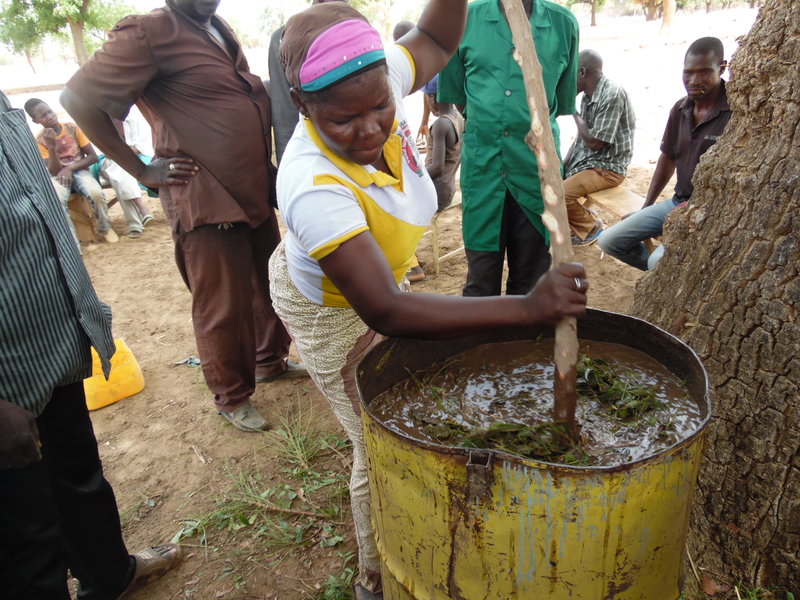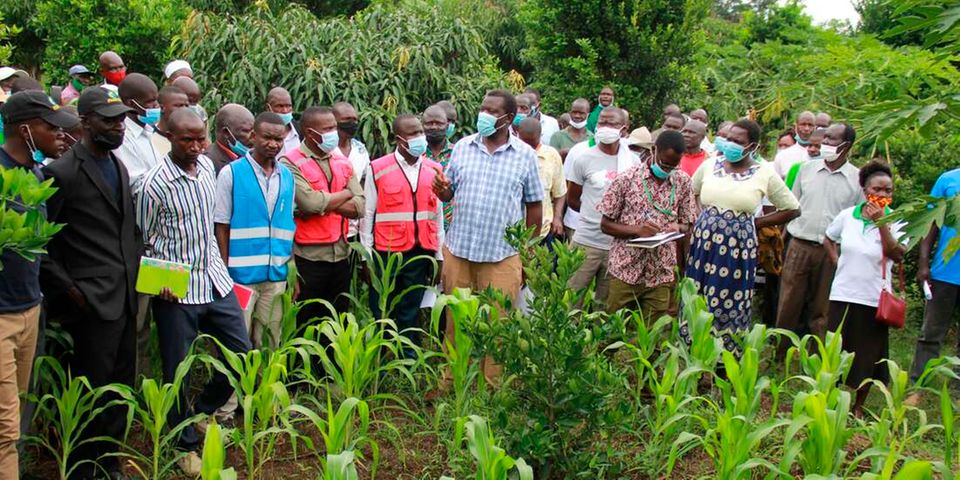This being planting season for farmers and fertilisers at record prices or unavailable to most small-scale farmers, we will be covering the simplest ways of making organic fertiliser in under one week.
Weed tea
This is made by stuffing a quarter full of weeds into a bucket and filling it with water. It is then covered and the weeds are left to soak for between two to four weeks, stirring every week until the water turns brown (tea-like).
This adds nitrogen, the most important and most absorbed nutrient by plants, and hydrates them as well.
Weed seeds in the tea can be sieved out using a worn sack (gunia) to avoid the introduction of weeds to your crop.
It is best fed to crops by pouring it at the base of each plant as most nutrients are absorbed through root hairs near root tips.
The mixture can also be diluted to the colour of weak tea and sprayed as a foliar fertiliser.
Manure tea
A bucket is filled up to one-third with manure and water is added for the remaining two-thirds.
This is left to sit enclosed for two days, being mixed twice daily. Before scooping and feeding the manure tea to crops, the solid material is left for at least one hour to sediment.
The liquid manure should be diluted to a pale brown colour before being fed as foliar to crops.
Manure tea helps primary nutrients, such as nitrogen (N), phosphorus (P), and potassium (K), get absorbed faster by plants while avoiding scorching. It is fed weekly to plants.

Compost manure
Compost manure is rotten plant and animal waste. Composting produces an organic fertiliser high in plant nutrients which improves soil physical characteristics, reduces organic waste on the farm and eliminates pathogens.
How composting works
Effective composting occurs when you create conditions that support the growth of tiny living creatures in the soil called micro-organisms. These are bacteria and fungi, only seen when using a microscope.
These micro-organisms are needed to breakdown the plant and animal waste material.
They produce heat during the breakdown of plant and animal waste.
After a few days, the prepared compost heap will get hot and when opened up can release steam.
As the waste materials decompose, they release nutrients in forms that can be used by crops.
Procedure
Crop residues and organic household wastes are thrown into pits and left to decompose for three to four months, after which the compost is ready for use.
The waste materials are heaped under a tree shade and left to decompose. In both methods, compost is produced, but the quality is low.
Purposeful methods can, however, be employed to produce high quality compost that can enable a farmer increase crop yields without using expensive inorganic fertiliser. This type of manure is called enriched compost.
Benefits of enriched compost
Cheap because it is derived from crop residues, animal manure, garden weeds, grass, hedge cuttings, kitchen and household waste.
Nutrients immediately available as the plant absorbs them directly without the need for further breakdown.
Increased crop yields
Water holding capacity of the soil is increased hence supporting crops adequately.
In situations where the texture of the soil is not conducive to root penetration, it improves it so that roots grow better to spread and search for more soil nutrients.
It helps in release of nutrients gradually, enabling the following year’s crop to benefit from their presence unlike the inorganic fertiliser that lasts only a season.
It increases the soil organic matter content that is good for crops and the environment in general.
Because weeds can also be composited, compost manure reduces weed density in farms since weed seeds are destroyed during the process of composting by the heat produced.
Manure reduces environmental pollution associated with inorganic fertiliser use.
Requirements
Panga, sticks, watering can and fork or spade. Space of 2.5m long by 2m wide for the heap and a similar portion to turn the material. The more the material available, the more space one requires.
Crop residues from cereals (maize, sorghum, millet, wheat) and legumes (bean, cowpea, groundnut and green gram).
Any other types of waste plant material. Use of green manures such as tithonia (Mexican sunflower), glyricidia, leucaena, sesbania, crotalaria and lantana leaves increase the compost nitrogen content.
Composting process
Select a location close to where you want to use the compost to reduce the strain of transporting it.
The place should be sheltered from wind, rain, sun and runoff.
A compost pile must not get either dry or wet.
The compost heap can be constructed above or below the ground.
If constructed above the ground, scrub the grass and loosen the top few centimetres of soil with a jembe (hoe). In a pit, sprinkle top soil at the bottom to introduce micro-organisms.
Build the compost pile by beginning with a bottom layer of bigger sized materials such as maize stalks of about 15cm long.
Add another layer of dry vegetation, hedge cuttings or grass of about 15cm. Sprinkle top soil and add water to moisten the whole layer.
Manure storage
Stored manure should be covered well to preserve the nutrients and help speed up decomposition of the raw manure.
Here a plastic film is recommended. This is because it can only let 20 percent of nitrogen out as compared to 55 percent nitrogen loss in manure that is stored in open heaps.
A recent study found that manure stored in open pits had lower mass fractions of N and P than manure in heaps under roof and in open heaps. It is therefore recommended to shade manure storage facilities as much as possible in order to reduce exposure to high temperatures and subsequent N losses, as well as limiting exposure to rainfall, and thus minimising nutrient losses due to leaching.






Thank you for what i have learned so far about to make compost manure and to make weed tea for the crops to grow healthy and get good results as farming is concerned and i hope to get more information as novice this field as i want to start my business in farming in country DRC next year,Aksante